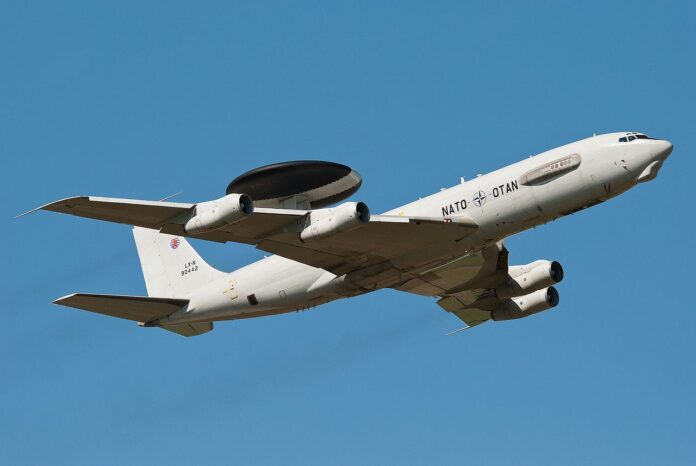All the media commented appropriately on the recent NATO summit in Madrid, emphasising the inclusion of Sweden and Finland in the Alliance. But less prominence was given to an arguably more important aspect of the proceedings, namely the change of strategy that is becoming increasingly clear among its components. Certainly, NATO was created as a defensive alliance and remains fundamentally so. However, the current dramatic events in Ukraine have changed the overall picture.
The destruction of the structures of Ukraine
Normally, a defensive alliance adjusts its field presence on the basis of reasonable short- and long-term forecasts. After 1960 during the Cold War, the two blocs had tacitly agreed that they would not engage in large-scale warfare outside their area of influence. It was taken for granted that the maintenance of global peace was a sure thing. Therefore, it seemed sufficient to prepare their military apparatus for a deterrent response, also thanks to the presence of nuclear arsenals.
However, after 24 February things changed. Russia has not only unleashed a fierce colonial war, aimed at destroying the material and immaterial structures of the Ukrainian nation, but it also clearly shows that it does not want peace. On the contrary, the Kremlin’s leaders compete in issuing threatening statements towards the countries lost with the collapse of the USSR. In other words, two pillars of coexistence between different systems are missing: trust in the good faith of the adversary and its willingness to avoid global conflict.
Germany sets up its own army
Translated into practical terms, this means an enormous mobilisation of economic resources aimed no longer at recovering lost ground in a possible attack, but at preventing and neutralising such an attack. Germany has earmarked 100 billion euros to set up its own army, and in Spain there has been talk of deploying 300,000 men who can be operational as quickly as possible. Is the post-World War II era over and are we probably heading for the pre-World War III era? Unfortunately, this may be true and we should reflect on the mistakes made. On the one hand, the perhaps unnecessary militarisation of Eastern Europe, and on the other, the failure of Russia as an industrial and democratic country and its relapse into the most obtuse militarism.
Il Trattato del Nord Atlantico mostra i muscoli
Tutti i mezzi di informazione hanno commentato adeguatamente il recente vertice della NATO a Madrid, sottolineando l’inclusione di Svezia e Finlandia nel Trattato. Se l’Alleanza si allarga è necessario darne conto. Ma minore rilievo è stato dato a un aspetto dei lavori probabilmente più importante, e cioè il cambiamento di strategia che si va affermando sempre più chiaramente fra i suoi componenti. Certamente l’Alleanza NATO è stata creata come alleanza difensiva e tale resta fondamentalmente. Ma le drammatiche vicende ucraine in corso hanno mutato il quadro generale.
La distruzione delle strutture dell’Ucraina, l’Alleanza NATO risponde
Normalmente un’alleanza difensiva regola la sua presenza sul campo sulla base di ragionevoli previsioni a breve e lungo termine. Durante la guerra fredda i due blocchi dopo il 1960 avevano tacitamente convenuto che non avrebbero dato inizio ad azioni belliche su larga scala al di fuori della propria zona di influenza. Si dava per scontato che il mantenimento della pace globale non fosse messo in discussione. Dunque appariva sufficiente predisporre il proprio apparato militare per una risposta a carattere deterrente, anche grazie alla presenza degli arsenali nucleari.
Ma dopo il 24 febbraio le cose sono cambiate. La Russia non solo ha scatenato una feroce guerra coloniale, che ha lo scopo di distruggere le strutture materiali e immateriali della nazione ucraina, ma mostra chiaramente di non volere la pace. Anzi i leader del Cremlino fanno a gara nel rilasciare dichiarazioni minacciose nei confronti dei Paesi perduti con il crollo dell’URSS. In altre parole sono venuti a mancare due pilastri della convivenza fra sistemi diversi: la fiducia nella buona fede dell’avversario e la volontà di esso di evitare il conflitto globale.
L’Alleanza e le reazioni, la Germania stanzia 100 miliardi di euro per un esercito proprio
Tradotto in termini pratici ciò significa un’enorme mobilitazione di risorse economiche finalizzate non più a recuperare il terreno perduto in un eventuale attacco, ma a prevenire e neutralizzare tale attacco. La Germania ha stanziato 100 miliardi di euro per costituire un esercito proprio e in Spagna si è parlato di mettere in campo 300.000 uomini che possano essere operativi nella maniera più tempestiva possibile. Il secondo dopoguerra è finito e probabilmente ci si avvia verso il terzo anteguerra? Purtroppo potrebbe essere vero e bisognerebbe riflettere sugli errori commessi. Da una parte la militarizzazione forse non necessaria dell’Europa Orientale, dall’altra il fallimento della Russia come Paese industriale e democratico e il suo ricadere nel più ottuso militarismo.
Leggi anche: The power of insurance companies over oil tankers – Assicurazioni e petroliere








